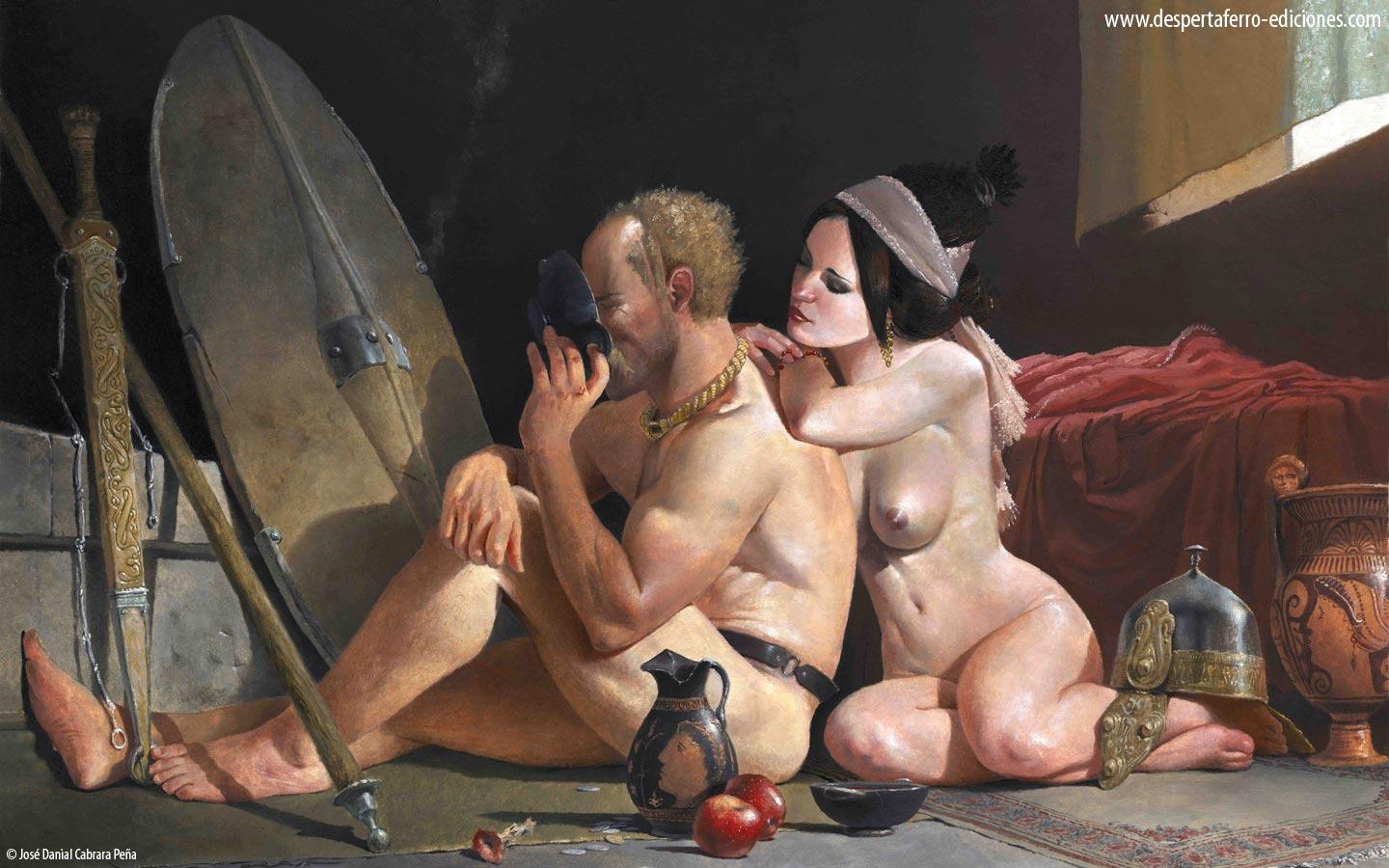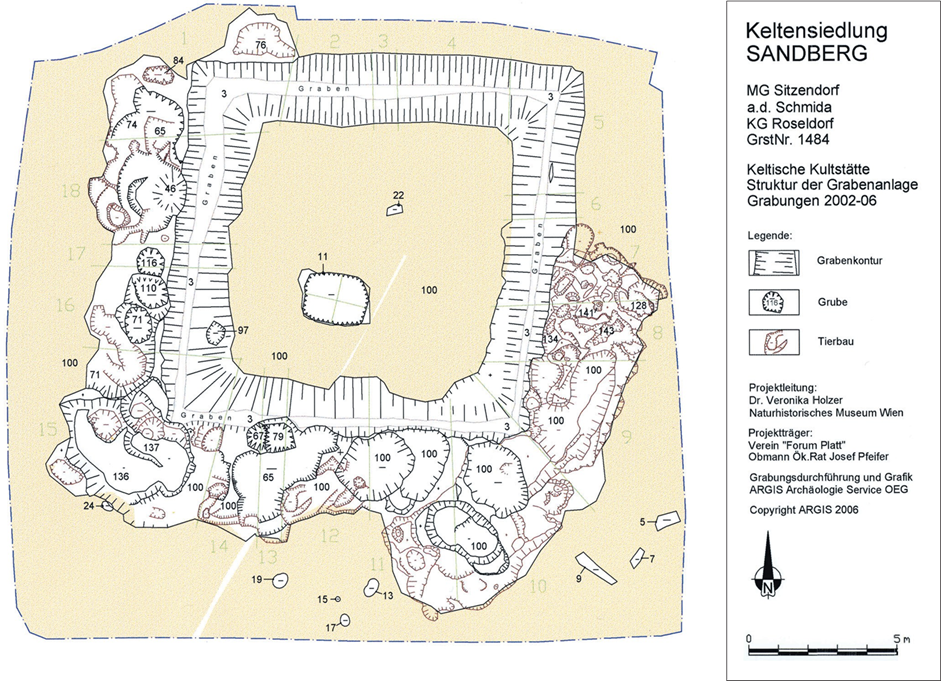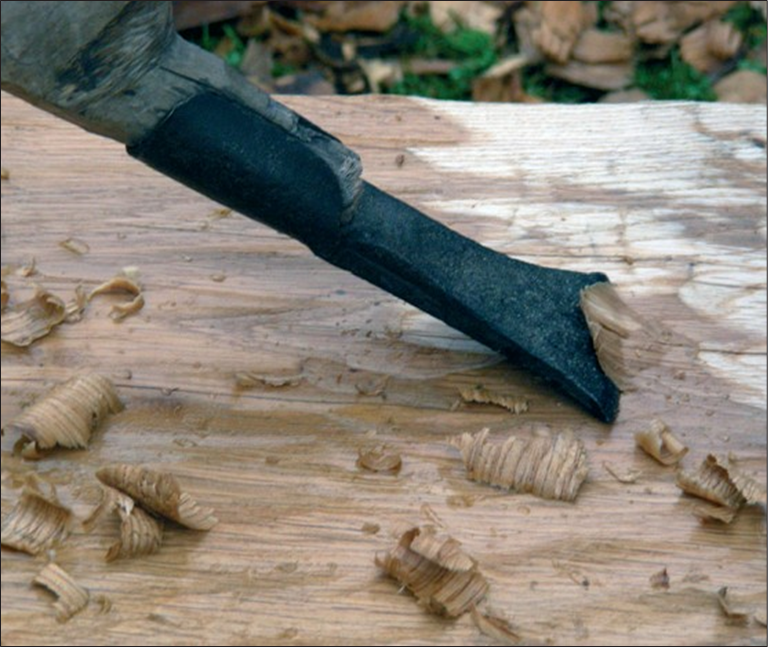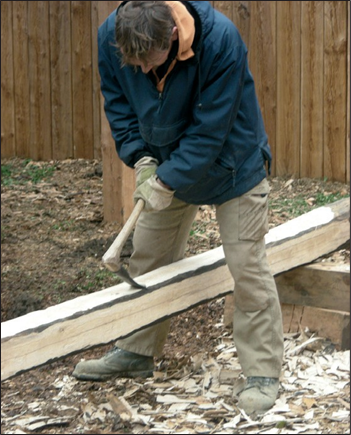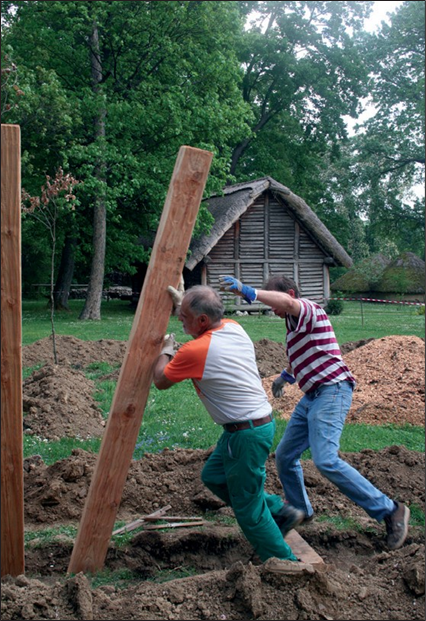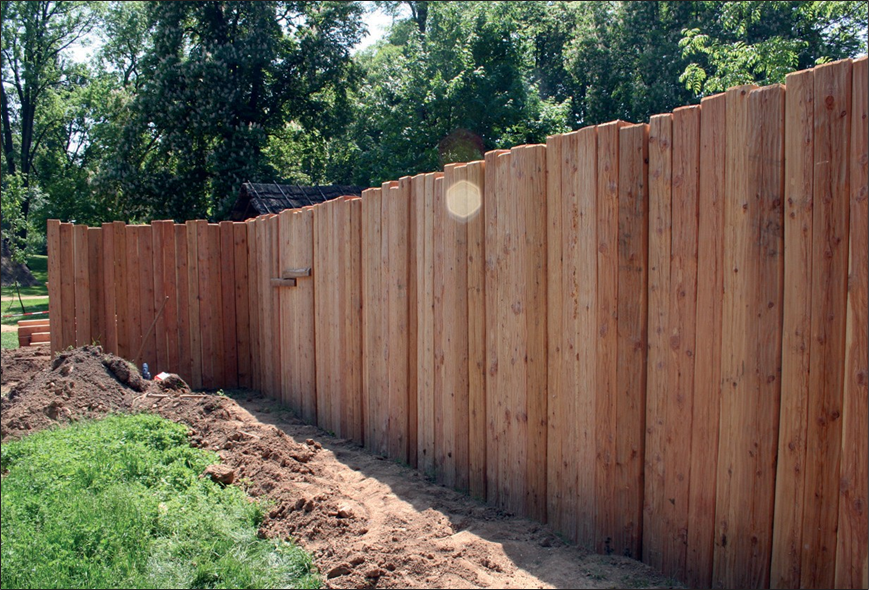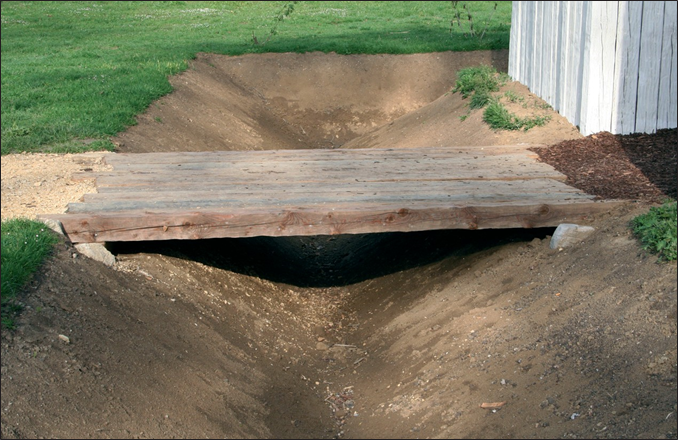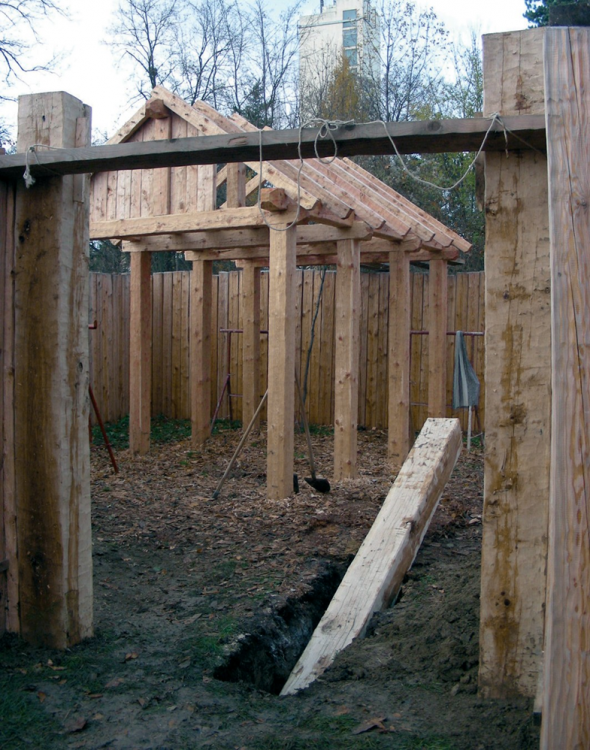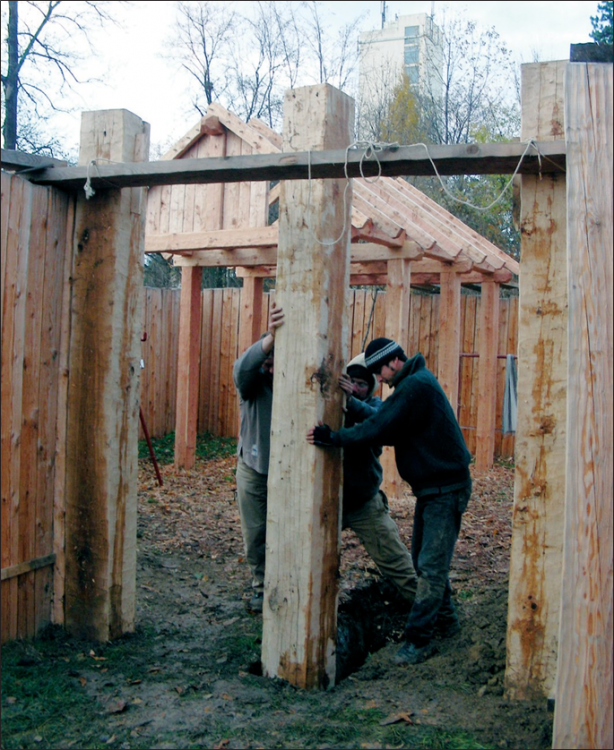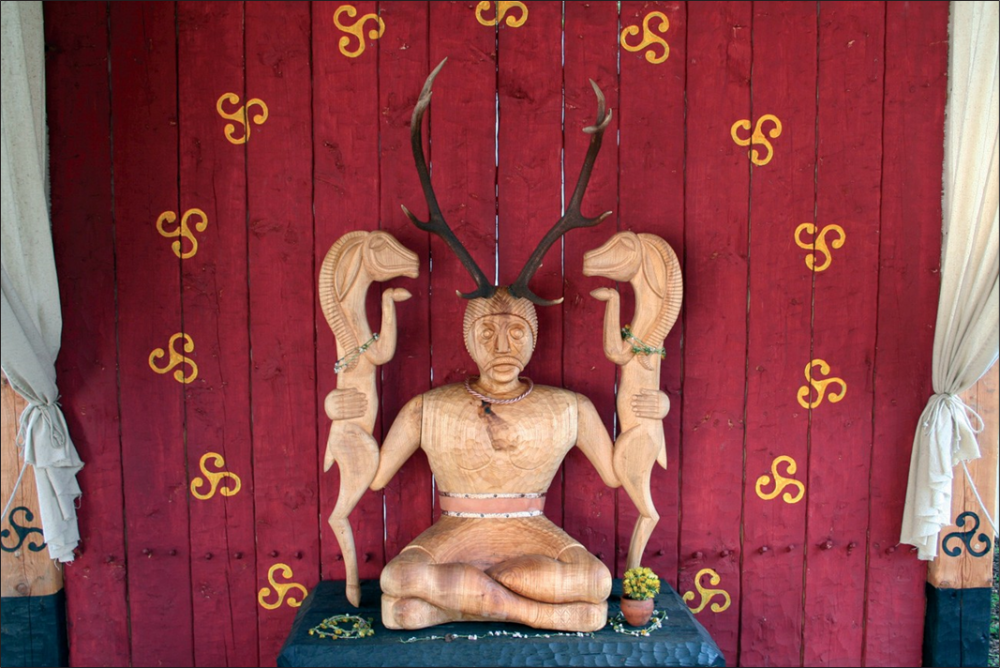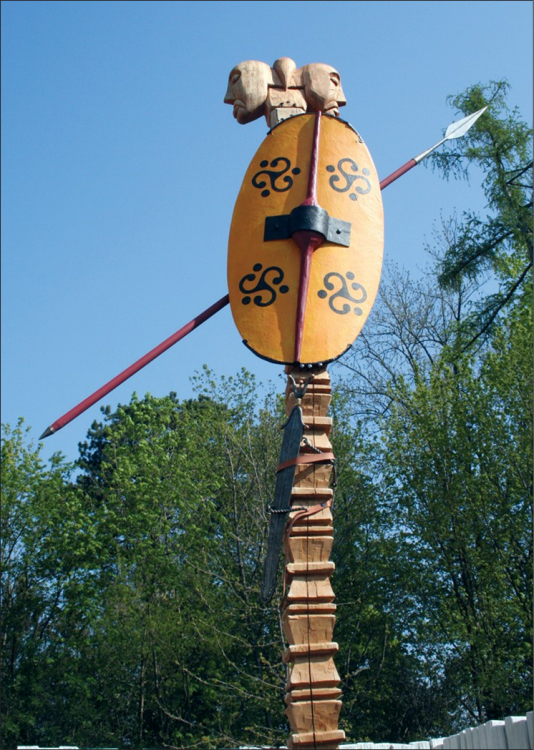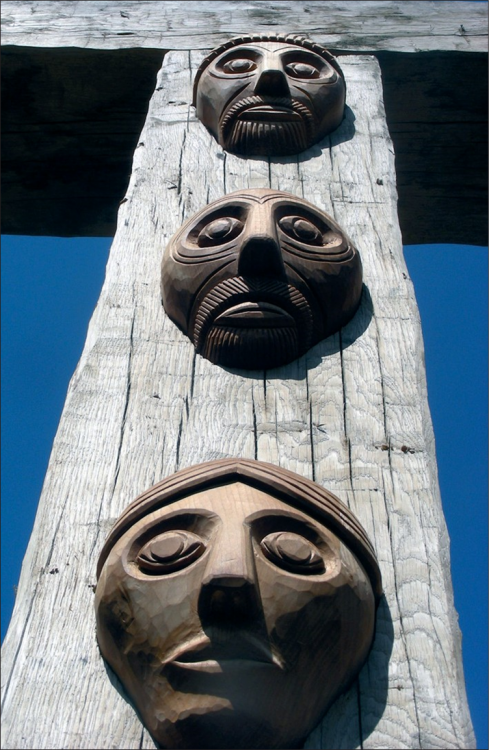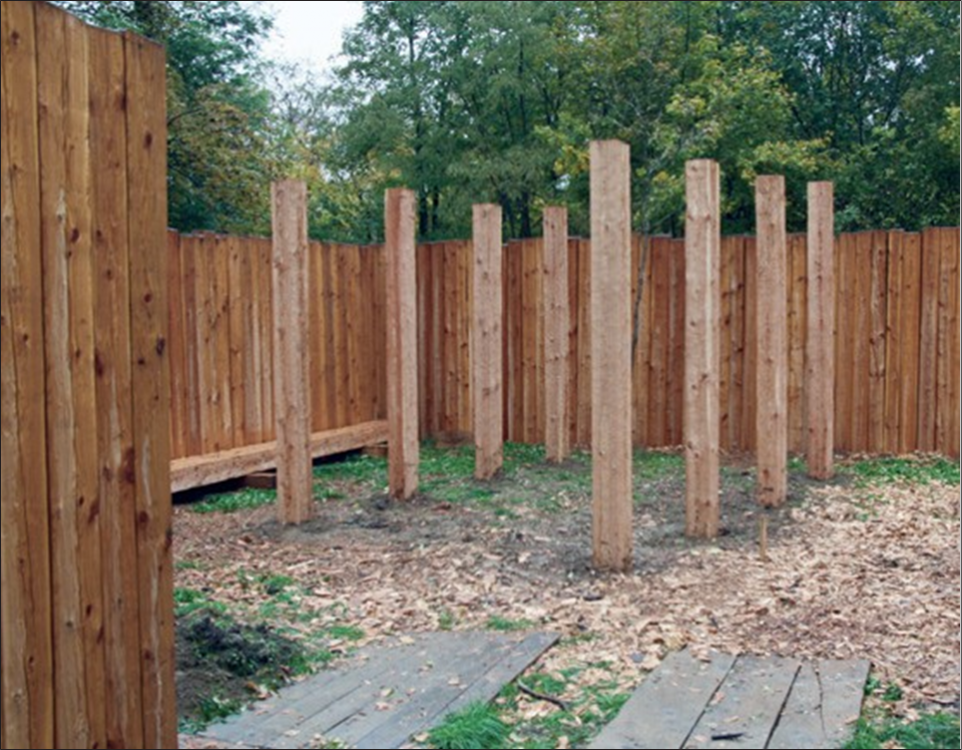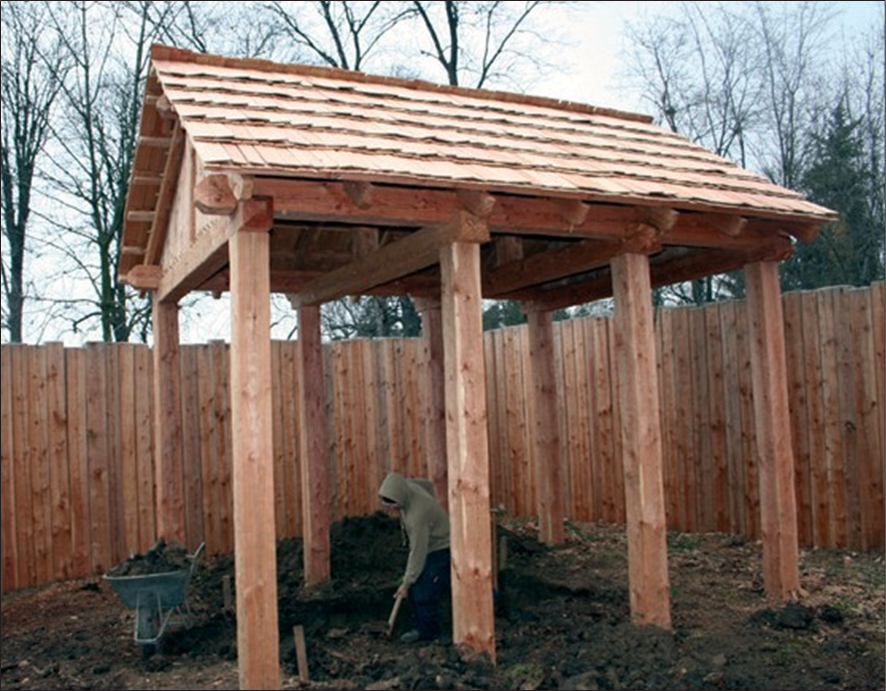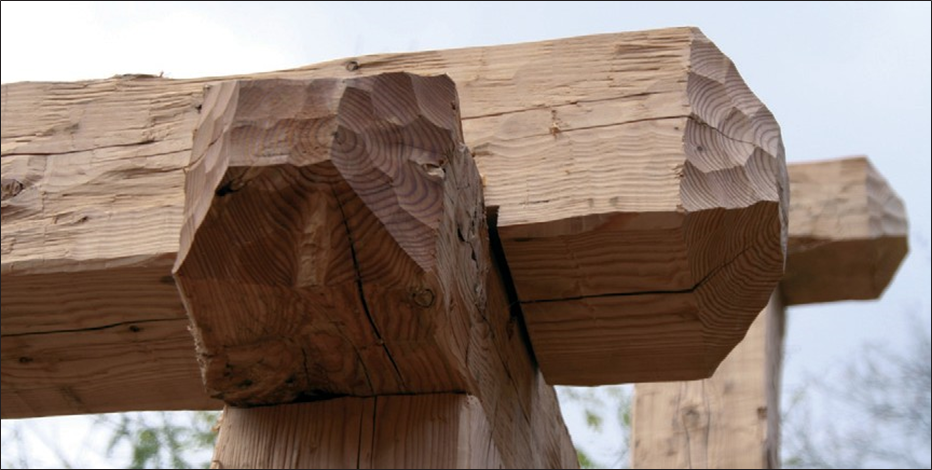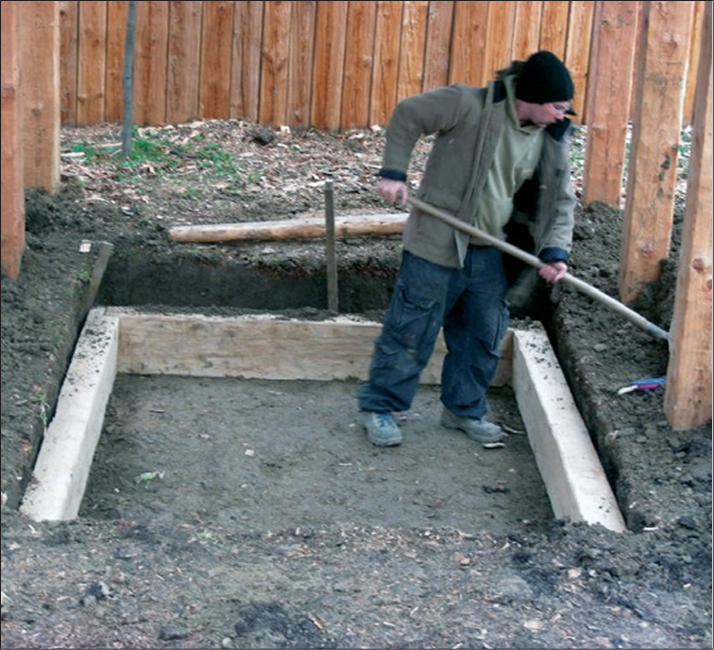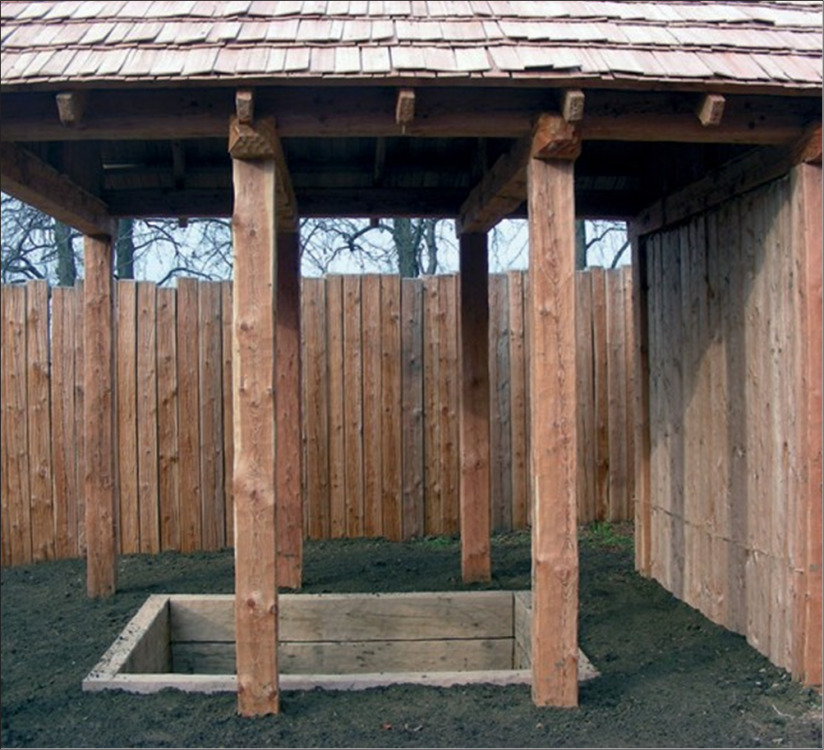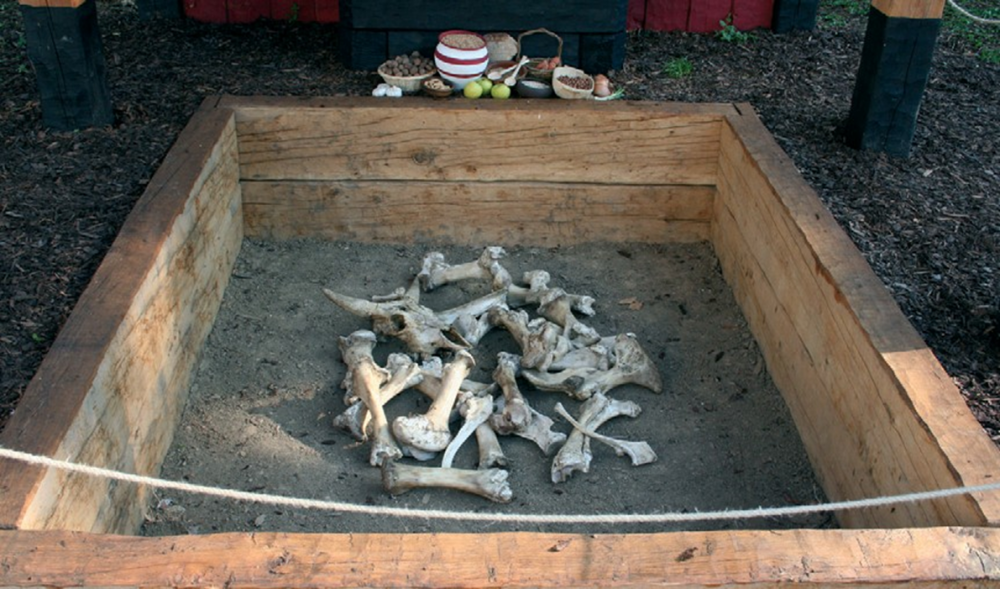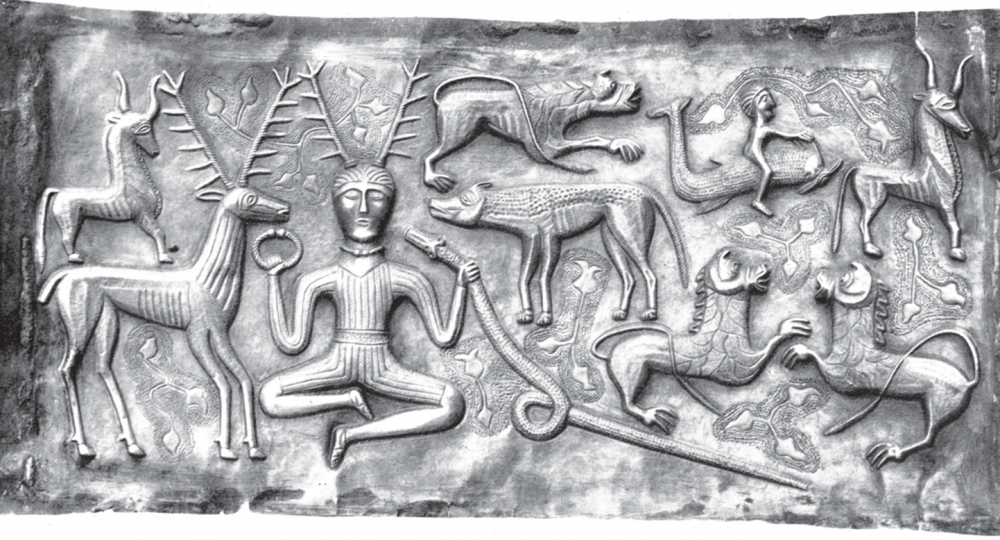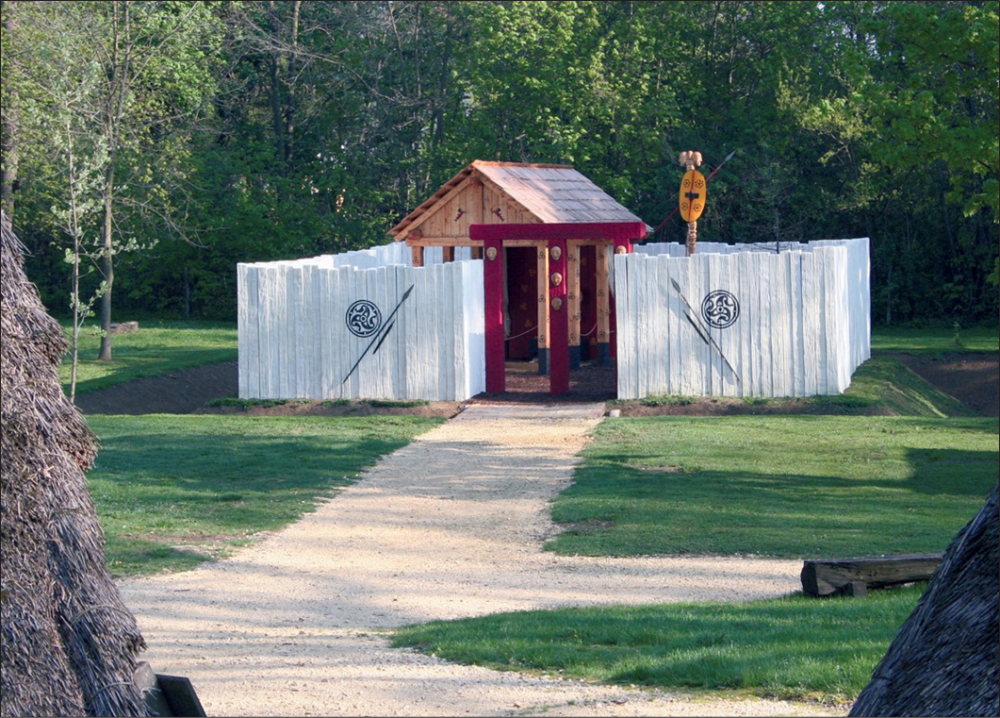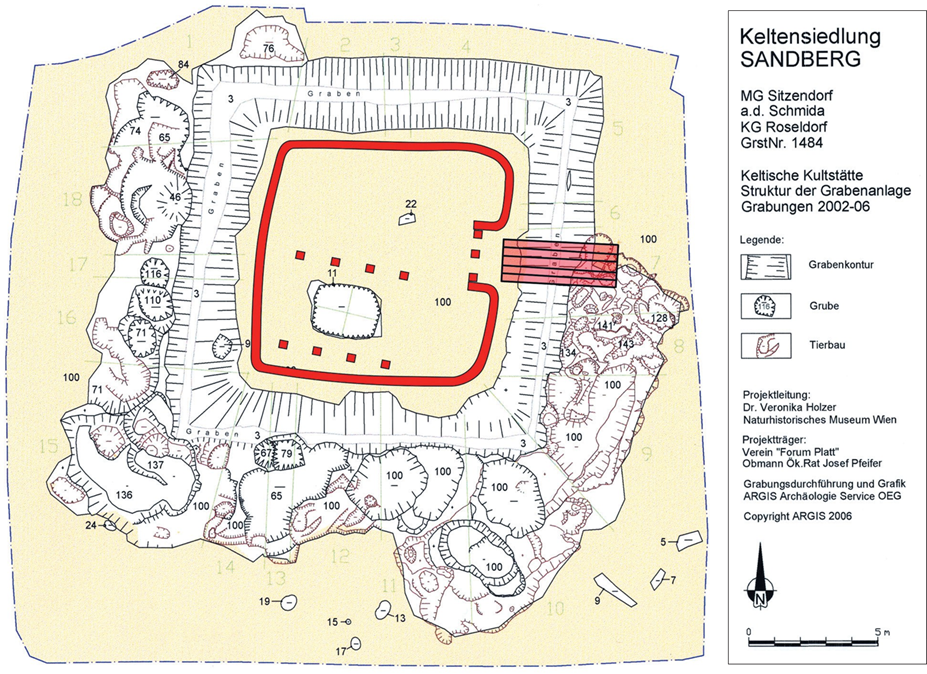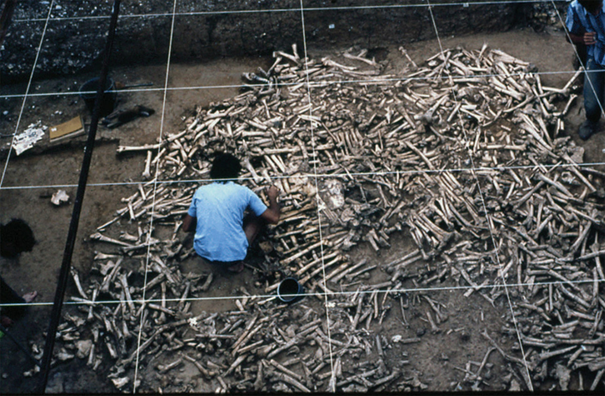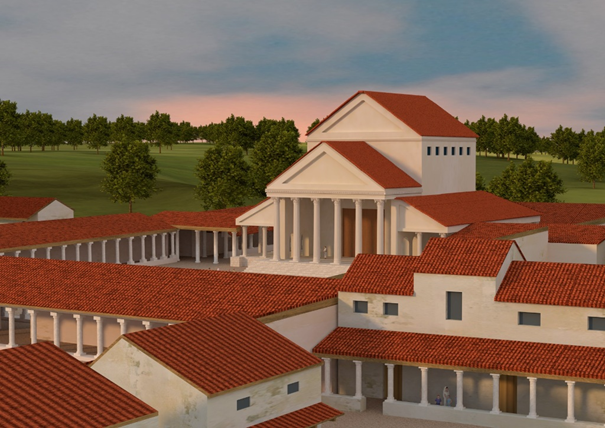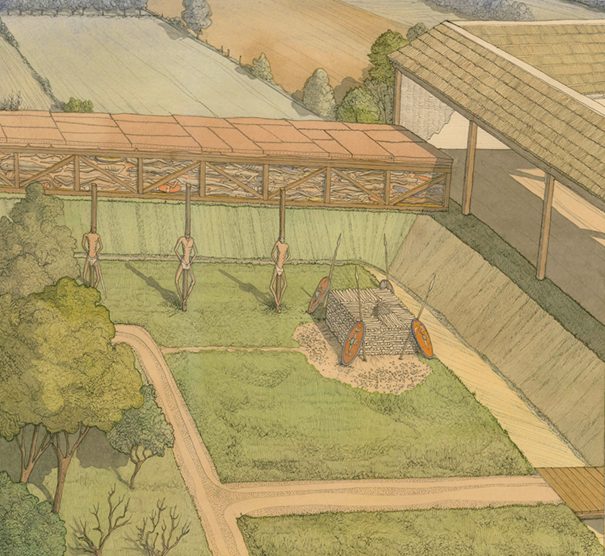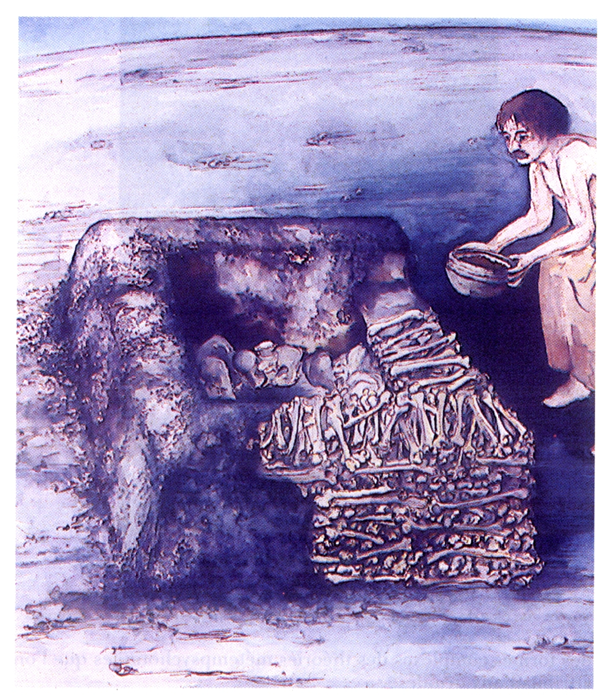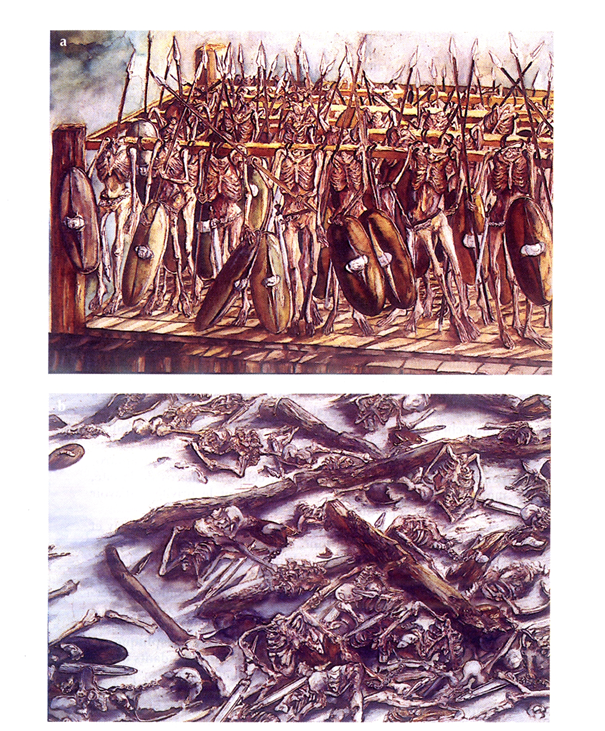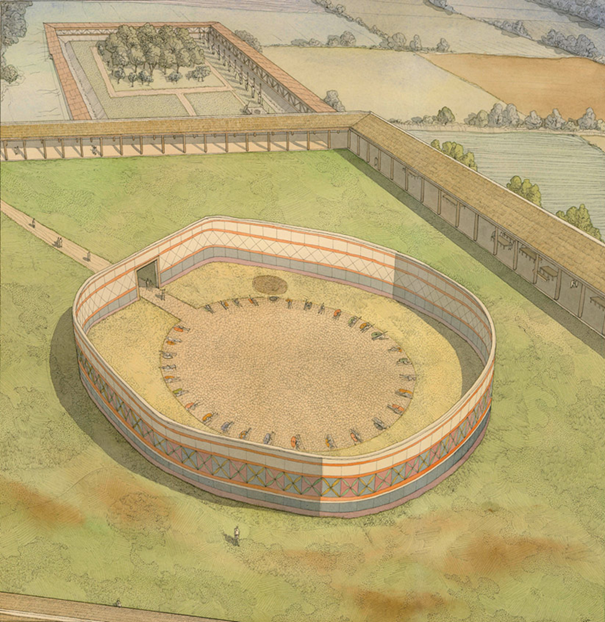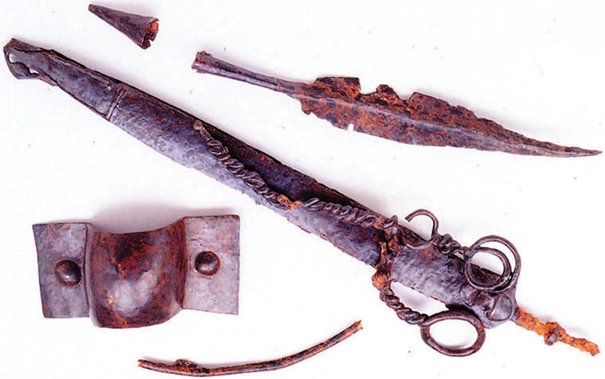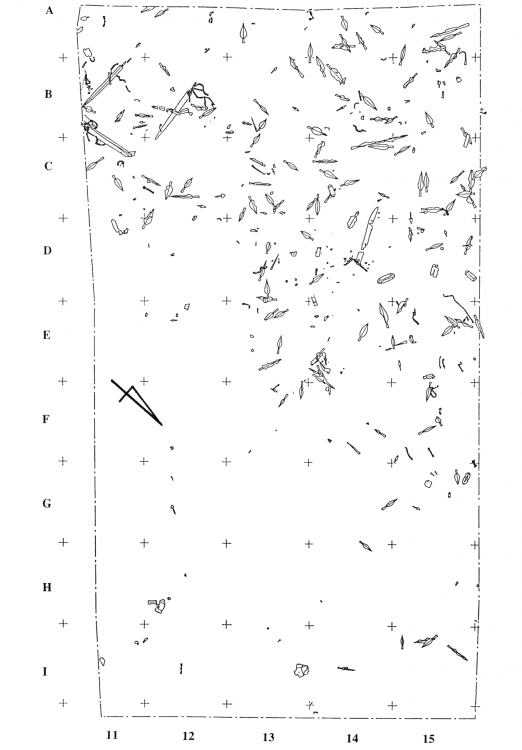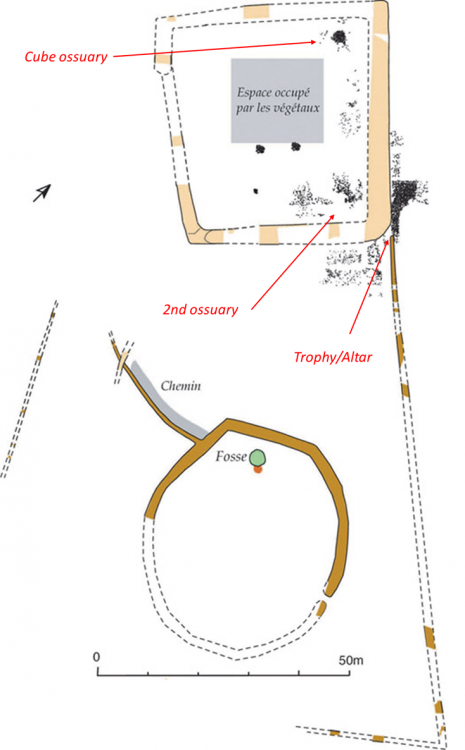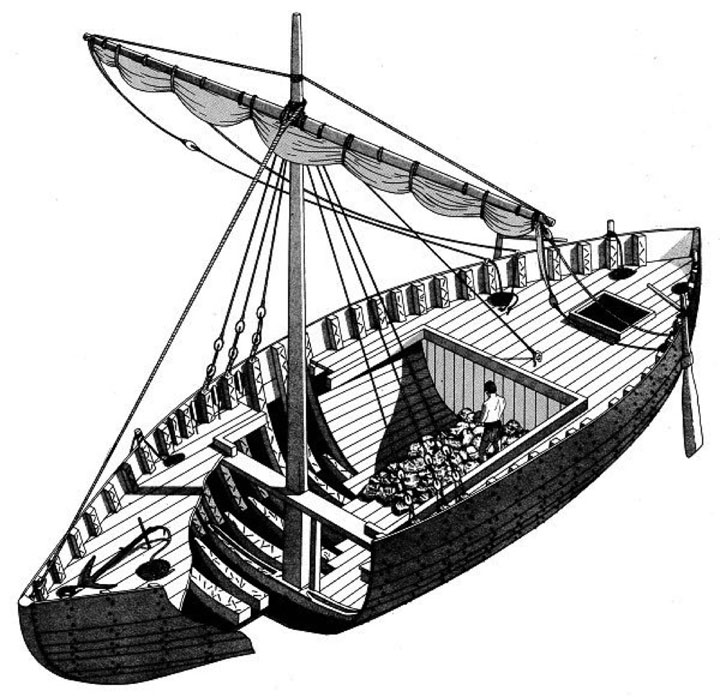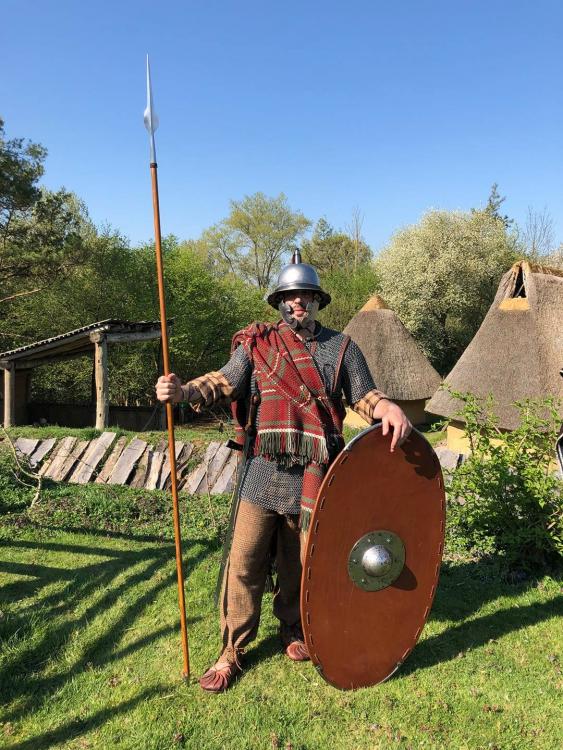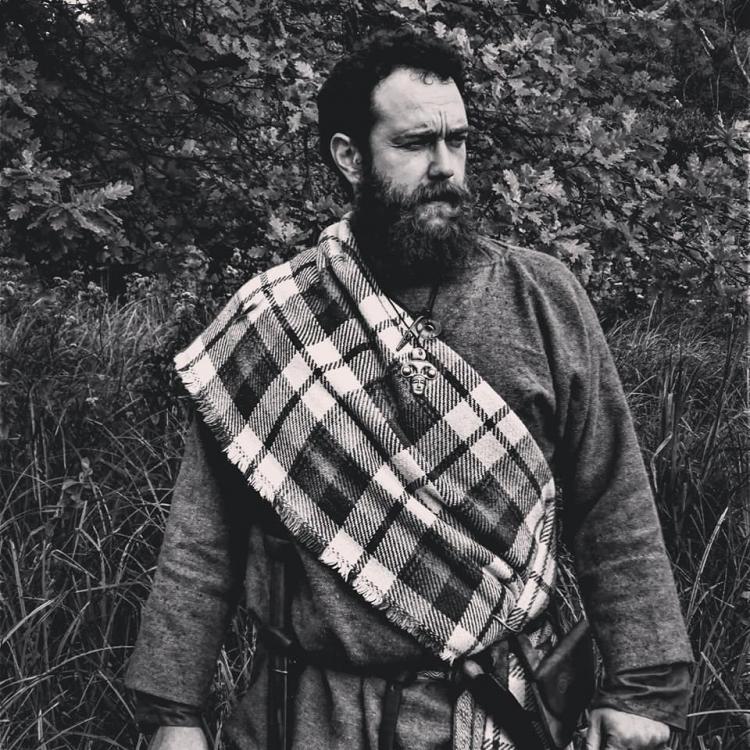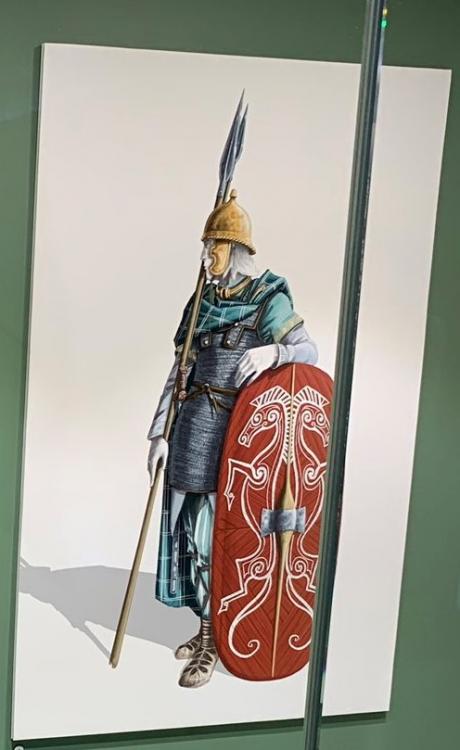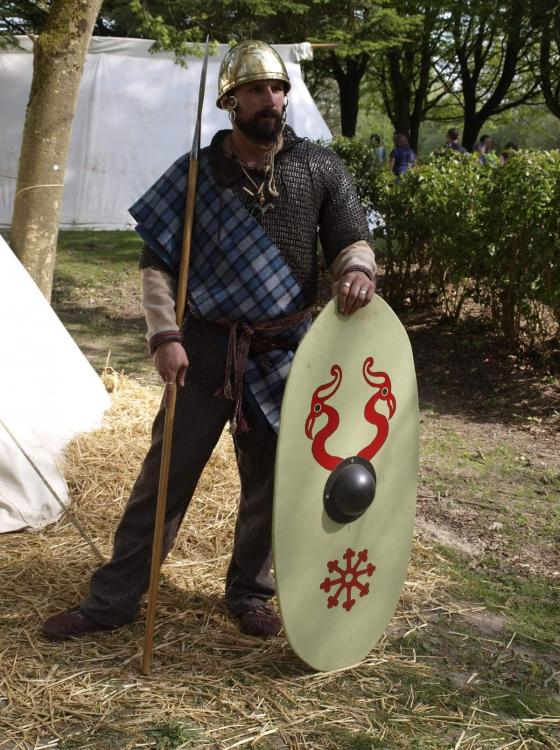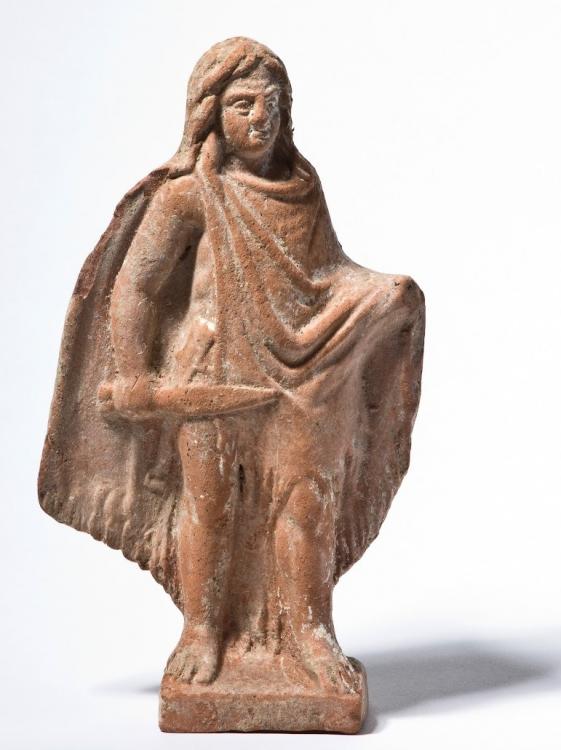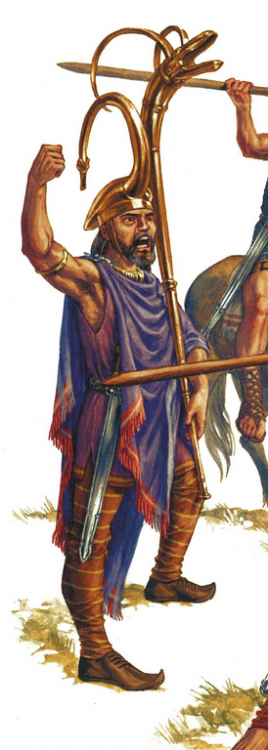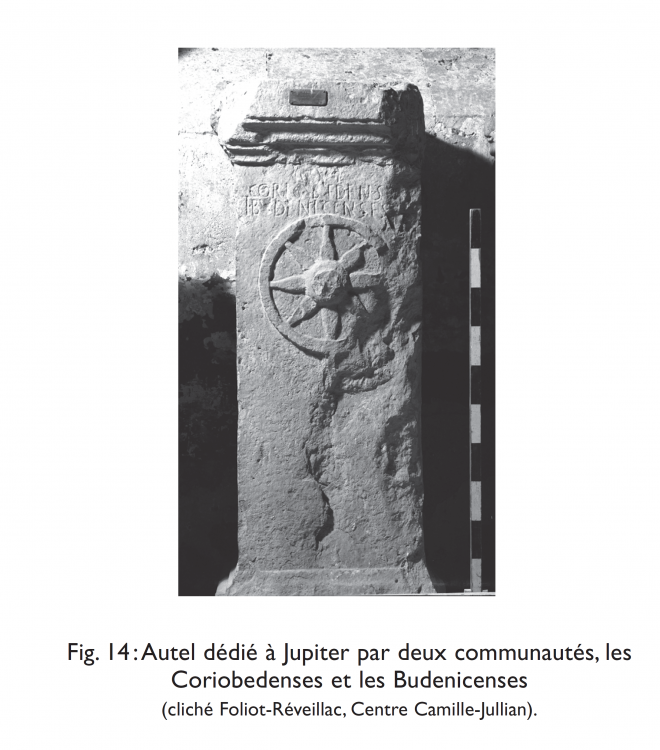-
Posts
2.379 -
Joined
-
Last visited
-
Days Won
80
Everything posted by Genava55
-
Probably a reference to the Bronze Age culture "El Argar", suspected to be the ancestor of the Iron Age Iberian culture.
-
At least it doesn't convert an enemy by shooting wololo at his face. I like the idea but to work it should be built really fast and I see how it could be abused by some players. By spamming it to block some units
-
Isn't it something from Ken Wood (the guy not the alpha)? I believe he was really fond of the Iberians.
-
Suggestion: differentiating the civs with deeper changes in the mechanisms of gameplay similar to Age of Mythology, Warcraft III and Starcraft 2. People generally object that there are too many civs for this. Counterargument: Grouping the civs by similar features and each groups having different mechanisms unique to their groups. The civs inside the same group could have also a few moderate differences like actually in A23 and A24 or like it is in the majority of AoE2 civs. Goal: having real different gameplay experience from switching to another civ. Note: this has nothing to do with previous suggestions proposing to make the game unbalanced on purpose with tier-list. I still think the game should be balanced. Examples of group (this only an illustrative example): Bellicist civs: Romans, Macedonians, Spartans Inheritor civs: Seleucids, Ptolemies, Persians Far-away civs: Maurya, Kushites Thallasocratic civs: Carthaginians, Athenians Barbarian civs: Britons, Iberians, Gauls Example of unique mechanism: the inheritor civs group could have a unique free building at the start because they have prospered in a territory with a very long story. Or a bunch of free houses because there were a lot of prosperous cities on the territory they acquired.
-
You're welcome. I think the extra 10 hp of the dogs should be removed. It should be enough to start.
-
It was a quick test with my laptop so feel free to do more match up @king reza the great
-
I actually made a mistake with the editor and actually 20 dogs are not beaten by 10+5 mixed units. Even 10 spearmen, 5 slingers and 5 javelineers barely succeed, mostly because the dogs are wrecking easily the ranged units if they reach them.
-
20 dogs beat 20 basic spearmen, a couple of them have the time to promote but still, they end up beaten. Edit: and 10 spearmen + 5 slingers + 5 javelineers actually barely beat 20 dogs.
-
Each option is fine for me.
-
.thumb.jpg.b21ca1d0c15fb56b42c39b25a0a40815.jpg)
The Gauls, religiously gore and gruesome
Genava55 replied to Genava55's topic in Tutorials, references and art help
I changed the map to make the whole thing clearer -
Personally I am in favor of a pop-bonus for each CC, which could help a lot at the start
-
.thumb.jpg.b21ca1d0c15fb56b42c39b25a0a40815.jpg)
The Gauls, religiously gore and gruesome
Genava55 replied to Genava55's topic in Tutorials, references and art help
I will use this topic to present a couple of sanctuaries, when I find the time. --------------------------------------------------------------- Roseldorf reconstructed A Celtic sanctuary is being built in Asparn/Zaya Summary This article discusses the construction of a 1:1 scale model of a Celtic temple based on the excavated situation at Roseldorf, Austria. This type of a temple, the first of its kind in the region, was similar to temples discovered in France. The sanctuary of Roseldorf and its reconstruction in the Museum für Urgeschichte des Landes Niederösterreich in Asparn/Zaya. A full scale reconstruction of a Celtic sanctuary based on features from the Celtic settlement of Roseldorf in Austria is designed to raise discussion within professional circles as well as in the public sphere. At the original site, which has a dimension of 25 × 25 meters, a considerable body of artefacts was brought to light that served as reference for the open-air area constructed for the Museums für Urgeschichte in Asparn alongside other finds from comparable Middle-Late La Tène sites in Southern France. The reconstructed facility is complete with ditch and palisade as well as a “porticus” corresponding to the well-known entrance area of the Roquepertuse sanctuary in southern France. A sacrifice pit in the sanctuary’s interior chamber (that was covered by a wooden superstructure decorated with the effigy of a deity) and a pillory were recreated under supervision of the VIAS-Institut in Vienna. After completion it turned out that there were ample differences between the first conceptual draft of the sanctuary and the reconstruction built by experimental archaeologists. Introduction. The importance of the discovery of the Roseldorf sanctuary in Lower Austria can be seen as an archaeological sensation, as the complex is unique in Central Europe to date. Similar comparative finds can be found above all in France. It is therefore a particular concern of Lower Austrian regional archeology to take into account the historical and archaeological importance of the site. An installation as a 1: 1 model was considered. Talking about cults, rites and religion in prehistoric archeology always has a certain stale aftertaste to it. In most cases, the archaeological remains are too poor, and they only give us insights into spiritual ideas in very few cases; the ice of our archaeological heritage in terms of cults and religion is too thin. As people of the 21st century, it is just not possible for us to participate in the world of thoughts and ideas of bygone eras. Nevertheless, or perhaps because of this, this subject is so interesting and often allows for many approaches. Therefore, the establishment of a “Celtic sanctuary” in an archaeological open-air site is a special kind of challenge, a provocation that should stimulate discussion. The discovery. Various ancient authors provide us with information about sacred spaces such as the grove and temple of the Celts. The general name for the place of worship was Gaulish "nemeton". It seems originally either to have meant "the consecrated, the sacred" or it originally just referred to a grove and was then generalized. The Sanctuary of the Sandberg is large, one of a cult site presumably consisting of several centers. It is located on the eastern edge of the well-known large Celtic settlement in Roseldorf in Lower Austria. Between 2002 and 2006, Veronika Holzer from the Natural History Museum Vienna systematically excavated the complex. The square size and the orientation towards the cardinal points characterized this archaeological structure as something special from the start and suggested a sanctuary in the first year of the excavation (Fig. 1). The archaeological excavations yielded very extensive finds, including weapons and their fragments, parts of wagons, animal bones, human bones, ceramics and small finds. The selection of finds and the dumping in the trench show that the acceptance of a sanctuary can certainly be considered. The maximum size of the entire system is 25 × 25 m. The trench itself is trapezoidal to triangular and on average 1 - 1.2 m deep. In the inner surface of the facility, however, slightly outside the center, there is a pit that is only about 0.5 m deep and has a level floor. The lack of finds leads the excavator to assume that it was a sacrificial pit that was carefully cleared after each sacrifice. The pit is therefore functionally related to the trench system. There is also a small, irregular discoloration on the inner surface, which can be interpreted as a post pit. Of particular importance is the fact that three sides of the trench were disturbed by numerous animal structures on the outside. Only the north side, the north-east corner and a small part of the east side were not disturbed, here the ditch could be recorded and documented in its entirety. What is striking is that the inside of the trench remained untouched. According to their size, the burrows may have been used by badgers or foxes. However, probably also at a time when the upper part of the trench was still open. Considerations for the establishment - questions. With the consent and guidance of the excavator, the Roseldorfer sanctuary was built as a 1: 1 model in the archaeological open-air site in the Lower Austrian Museum of Prehistory between May 2007 and April 2008. The scientific advisory board included Veronika Holzer, Ernst Lauermann, the experimental archaeologist Wolfgang Lobisser and Peter Trebsche. The implementation was carried out by the scientific institution VIAS from the Institute for Pre- and Protohistory at the University of Vienna under the direction of Wolfgang Lobisser. Some basic requirements had to be taken into account. Numerous questions were waiting to be answered. • The archaeological findings of the large sanctuary of Roseldorf serve as the basis. • Which other sanctuaries are particularly suitable as an analogy to Roseldorf? • The time position must be in Latène C, in the Latène culture. • A match in the documented findings should be sought. • Selection of the sacrificial trenches (weapons, wagon parts, animal and little human bones) • The published reports from French sanctuaries serve as comparative findings. • The new ensemble must be adapted to the local conditions and fit well into the archaeological open-air site. • What could a possible palisade in Roseldorf have looked like? • What could the entrance to the sanctuary in Roseldorf have looked like? • How can buildings inside the Roseldorf sanctuary be reconstructed? • Do colors play a role? • The structures visible above ground, such as palisade and other built-in components, must be made of wood that is as durable as possible. • The on-site implementation must be a mixture of experimental tools and the limited use of modern means, since a facility built purely on an experimental archaeological basis would have exceeded the time and financial framework by far. Which sanctuaries can be used for comparison purposes? Gournay-sur-Aronde Due to the offerings and the dating, it works well as a parallel to Roseldorf, but it is larger and more complex; for comparison there are phases II - IV with “temples” I and II, although the reconstruction is rather uncertain. The palisade was built around the moat without nails. The entrance is designed as a ditch interruption, the palisade bends here in two cheeks, a footbridge or a bridge must be accepted. Ribemont-sur-Ancre. The older phase (LT C) fits well with Roseldorf in terms of time and structure of the landfills. The center and entrance have not yet been examined. A palisade (inside the ditch) is only proven for Latène D after the ditch has been backfilled [recently disproven]. Corent. The dating (Latène D) and the offerings cannot be compared so well with Roseldorf. It has a palisade with iron nails on the outer edge of the trench. The entrance is assumed to be a ditch interruption with two upstream posts. There are no indoor buildings [that's actually wrong, very wong]. Bennecourt. In terms of its layout, it is easy to compare with Roseldorf (square ditch with a central pit), but it was shorter and is dated in Latène D1. There is no evidence of a palisade, but of an earth wall outside the moat. The entrance was a short break in the ditch to the east. A simple six-post structure with references to closed walls stood above the central cult pit. Fesques. The facility is much larger than Roseldorf, the central pit and an octagonal post structure all around are comparable. Montmartin. Due to its size, it is only comparable to a limited extent with Roseldorf. A palisade was only laid out when the trench was partially filled. The palisade consisted of round timbers connected with wattle and plastered with clay. Moat and palisade. The moat is probably the best preserved part of the complex. Its largest dimension with all faults is 25 × 25 m. The actual original size, however, is 17 × 17 m. On the surface it is up to 3 m wide, trapezoidal to triangular 1 - 1.2 m deepened. In order to maintain the triangular shape of the trench, a wooden cladding is to be assumed, which has not been proven in Roseldorf. On the other hand, in the construction of Gournay-sur-Aronde we always have an ocher-rust-brown layer in the trench profile, which is explained by the cladding with wooden boards. The question now arises how such a palisade could have looked and what function it had. It is clear that an enclosed space should be created where certain actions were carried out that should not be seen by everyone. As shown, this self-contained space could be constructed in a number of ways. Exceptionally good conservation conditions for organic materials e.g. B. on the Dürrnberg near Hallein, allow us some insights into the wood processing techniques of this time. Construction timbers and their traces of processing give insight into processing techniques, which in turn allow conclusions to be drawn about individual work steps (Fig. 2, 3). Timber trimmed over a large area, the use of posts, mortised slots and grooves are clearly proven. It is therefore quite legitimate to use these techniques when erecting the above-ground wooden structures. We decided on the variant with square-cut wooden palisades with a wide variety of cross-sections from 13 to 25 cm. The height was chosen so that about 2.5 m was built above ground, the palisade posts were dug into the ground by about 1 m (Fig. 4) The posts were connected to one another with wooden pegs on the inside, so that a tight wooden wall was created (Fig . 5). The entrance and its design. According to the excavator, the entrance area was chosen in the east. The reason for this is likely to be sought in the orientation precisely oriented towards the cardinal points. Unfortunately, there is no archaeological evidence for the entrance, such as an earth bridge. Let us again use the Gournay plant as a comparison. In phase II, the outer palisade curves inwards, and there is evidence of a pit in the entrance that forced those entering the sanctuary via a footbridge, a kind of "rite of passage". We have to assume this crossing of the trench for other sanctuaries as well, since facilities are often surrounded by an uninterrupted trench. Earth bridges could be verified in the Bennecourt, Vix and Montmartin systems. In the open-air site in Asparn, the entrance area was oriented towards the south so that it was visitor-friendly. Furthermore, processed oak posts were chosen as a bridge over the moat. The width of the bridge had to be made correspondingly wide (Fig. 6). The actual entrance gate must be seen as a particular challenge. Evidence of above-ground structures is not available. However, we proceeded from the assumption that the gate probably had an essential meaning in the cultic area, entering the complex through a gate as a "threshold" between the profane world and sacred ground must have been appreciated accordingly. A very good parallel from southern France, the Celto-Ligurian sanctuary of Roquepertuse, provides clear indications for the importance of the entrance area. Numerous stone fragments of three monolithic pillars with skull-shaped niches that originally contained human skulls were discovered. There was also an architrave with a carved skull motif, a crossbeam with a horse frieze, a bird statue and a two-headed "Hermes". A large research project in 1988 resulted in new results for the reconstruction of the entrance area. It was found that the distance between the pillars was not 70 cm but 2.1 m, which significantly increased the size of the entire system. The human skulls are not said to have been displayed on the outside of the building either, they are said to have decorated the inside. When building the outdoor area, we decided to use the Roquepertuse entrance portal as a model, but we use massive, square-edged oak posts (approx. 28 × 28 cm) as building material (Fig. 7). These were erected as three erected pillars on the inside of the short gate walls formed by the palisades, each 85 cm apart (Fig. 8). With the transom, also approx. 30 × 30 cm thick, the palisade height of approx. 2.40 m was exceeded by approx. 0.70 cm, the total height of the gate is approx. 3.10 m Tores was accepted with 2.60 m. The fact that real human skulls are placed in recesses was rejected right at the beginning of the deliberations. Skulls chiseled from wood were attached to the outside of the pillars, facing the person entering (Fig. 9). Three skulls in the central pillar and one skull on each of the outer pillars. But in order to do justice to the new research in Roquepertuse, wood-carved heads were also attached to the inside of the crossbeam. Remnants of painting were also found in Roquepertuse, so corresponding colors such as red, white and black were also used. The empty surfaces of the pillars and the crossbeam were partially decorated with Celtic motifs that were worked into the wood. We are referring to none other than Alfred Haffner, who says: “…. In my opinion, we can postulate without hesitation that the ornamentation so characteristic of Celtic art has also found its expression in the sanctuaries that we can use a rich carving and painting decor using, for example, coinage, vessel painting and the imagery of the Gundestrup kettle can count on the symbolic language that has been so impressively handed down. " The interior and its design. In the inner surface of the Roseldorf facility, albeit not exactly in the center, there was an approximately 2.50 × 1.80 m large, rectangular and only 50 cm deep pit with a level bottom. It was almost completely empty and is interpreted as a sacrificial pit that was neatly cleared out again and again. According to the excavator, it is probably functionally related to the trench complex. In addition, a small depression was discovered in the interior, which can be interpreted as a post pit with reservation. It is believed that the offerings such as B. Weapon trophies were displayed on stakes. The bloody sacrifices were specifically performed in central pits; in this case the sacrificial pit served as an altar where the victims were exposed to putrefaction. In a later time the altar will be roofed over and moved to a room. This is where we tie in with the implementation in Asparn. It would not be justifiable in terms of museum education to merely show the sacrificial pit as such, so we decided to use a wooden superstructure. Examples of this can be found again in the French sanctuaries. In the sanctuary of Gournay-sur-Aronde, wooden superstructures of the sacrificial pit have been proven from construction phase II. In terms of time, only phases II and III come into consideration for Roseldorf. Here we are dealing with a superstructure with new post holes (phase II) and once with eleven post holes (phase III). Both buildings were not aligned to the entrance and to the cardinal points, both were erected somewhat offset. This was also the reason why the wooden superstructure in the Asparner open-air site was also installed offset from the entrance. In Bennecourt, a simple six-post structure with references to closed walls had been erected over the central sacrificial pit. The Montmartin complex, which because of its size can only be compared to Roseldorf to a limited extent, has two four-post structures above the central sacrificial pit. This is followed by a six-post construction with partially closed clay walls on thresholds. In Asparn we opted for eight square machined posts, four on each longitudinal side of the pit, the posts were set approx. 1.10 m apart and protruded approx. 2.50 m above ground from the ground (Fig. 10 - 12). We chose a gable roof covered with larch shingles as the roof. This rose above the palisade wall. The sacrificial pit itself was clad with hewn square timber (Fig. 13 - 15). Roof structures naturally do not survive in the archaeological environment. It is therefore particularly important to have an honest discussion between what is “scientifically proven” and what is “only likely”. If you get involved in this discussion, then the “scope for interpretation” on the part of “experimental archeology” is quite large. We only opted for one wall, the rear wall, which was built as a split plank wall. The other walls remained free. Sheets of fabric were hung between the two rear posts. The princely grave of Hochdorf, or also grave 1 from hill 3 of Kappel am Rhein, shows us that fabrics played a role in cladding walls. We also decided to clad the inside of the sacrificial pit with wood. A wooden figure of a god was to be placed on the back wall. The excavation in Roseldorf provided a splendid indication of this. In 2005, a well-preserved ten-fender antler pole was discovered in the upper trench area on the southeast side. These antlers had still received the front cone, so that it was not a release rod. It was particularly important that the end journal piece was machined and had a drilled hole (Fig. 16). This indicates that the deer antlers were probably attached to a wooden object, possibly in a god figure, the “Cernunnos”, as it is also shown on the Gundestrup kettle (Fig. 17). The excavator suspects that when the sanctuary was abandoned, the statue was destroyed and the antlers deposited in the trench. "Figures of gods", made of stone or wood, are well documented, although of course the ultimate certainty as to whether God, prince or hero is depicted is mostly missing. These include the steles from Holzgerlingen, Hirschlanden or Glauberg, or the wooden figures from Montbouy, the figures from Lake Geneva or from Villeneuve in Switzerland. So, based on the antler discovery from Roseldorf, we wanted to depict the “Lord of the Animals”, the god Cernunnos, as a seated god, just as it was in the Gundestrup kettle (Fig. 18). Seated deities or people can be found again and again, such as the limestone statue from Roquepertuse or the bronze statue of a Celtic deity with torques and deer hooves from Bouray-sur-Juine. The findings from Fellbach-Schmiden came in handy for the execution. The works of art found here are probably the best proof of the high quality of Celtic woodworking. Attempts to reconstruct the cult images of Fellbach-Schmi-den with a female or male deity between the animals are common. In the center of the system, the remainder of a post hole could be discovered, which could be interpreted as the remainder of a possible show post (Fig. 19). This assumption is corroborated indirectly, however, due to the penetration of nail residues, especially in sword scabbards and secondary perforations, which indicate the existence of show stakes. The possibility that the objects were also attached to the inside of the palisade, as is also suggested for the sanctuary of Gournay-sur-Aronde, where there is also an inner ditch, is not up for discussion with the current state of research by Roseldorf. The scientific processing of the finding and the numerous finds from Roseldorf is far from over, so the result presented here is to be seen from the current state of research. Figures: Fig. 1: Fig. 2: Fig. 3: Fig. 4: Fig. 5: Fig. 6: Fig. 7: Fig. 8: Fig. 9: Fig. 10: Fig. 11: Fig. 12: Fig. 13: Fig. 14: Fig. 15: Fig. 16: Fig. 17: Fig. 18: Fig. 19: Fig. 20: Fig. 21: -
Religion is a matter of belief and rites, understood as a system of thoughts, of practices which found religious institutions and determine the function they perform in society. The relatively recent development of protohistoric archeology, in France as in most countries of Europe, has brought out from the subsoil an important body of documentation that simply did not exist 50 years ago. It will thus be difficult to find, in the sum of works and articles which were devoted to the religion of the Celts until the beginning of the 1990s, the slightest trace of sanctuaries, war trophies, sacrifices and banquets which founded and today structure our knowledge of religious practice in Gaul. The excavations at Gournay-sur-Aronde and Ribemont-sur-Ancre were revolutions in our perception of the religion of the ancient Celts. Many other places of worship and shrines have enriched our understanding of their society since then, but these two particular cases remain unique. Gournay-sur-Aronde is the better known and also the more presentable of these two examples. I will therefore present Ribemont-sur-Ancre first because it is really very interesting and fascinating. Ribemont-sur-Ancre (Somme department, Picardy, northern France) is significant because it reveals the existence of a forgotten battle, which was held in the middle of the 3rd century BC. Since the first exploration works done by archaeologists in 1966, Gallic weapons have been brought to light at the place of what was later recognised as a great monumental temple. They were then interpreted as burial remains later upset by the builders of the temple. We will see further that the encounter of Gallic objects and Gallo-Roman remnants on the same place is not due to coincidence but illustrates the story of a site used for nearly seven centuries. The discovery in 1982 of a strange set of human bones aroused more attention among archaeologists. It was composed of 2,000 bones coming from superior and inferior limbs which had been carefully lined up and crossed to form a kind of cube around a cylindrical cavity which contained burned splinters of human bone. It turned out that such a set had nothing to do with a funeral. More extensive research needed to be done. The bones found in 1982 Fifteen years of excavation were devoted to the study of these Iron Age levels. The topographical context provides interesting information. The place where the foundations of the great Gallo-Roman temple and Gallic remains were found is located in the valley of the river Ancre which flows into the river Somme about 15 km away. Its precise location is on a little hillock on the edge of the plateau. However, it is not situated at its top but slightly lower, on a slight slope which overlooks the valley. This area is actually an alluvial plain, perfectly flat and measuring 500 to 600 hectares. The Gallic site of Ribemont-sur-Ancre, later reoccupied by the great Gallo-Roman temple and its sacred surrounding wall, is located on the upper part, whereas the rest of the Gallo-Roman sanctuary (amphitheatre, thermal baths, residential area) go down in the valley to the river. This was the main motive for a careful archaeological survey of the place threatened by nearby construction projects. The Gallo-Roman temple The Gallo-Roman cult complex The site survey revealed the presence older enclosures nearby dating from the La Tène period, an Iron Age period in relation to the Gauls. Excavation revealed a very well-structured set of three enclosures which appears in the form of ditches and walls made of wood and cob. It is one of the characteristics of built areas in northern Gaul to be organized in such a manner. Agricultural domains, burial sites and fortified places are always quadrangular spaces bounded by more or less imposing ditches whose size corresponds to the nature of the built area. Circular enclosures are rarely found in the Middle and Late La Tène period. The three enclosures from the Iron Age These three enclosures differ architecturally. The square enclosure is bounded by an impressive ditch more than 2 m deep, remaining open, which is not doubled by a fence or a wall. The great trapezoidal enclosure consists of a wall made of wood and cob on which leans a portico on the inner side. The portico is composed of a roof resting on the wall and on posts in the front. The circular enclosure has the shape of a tower, closed by a thick wooden wall covered with cob, more than 6 m high. Inside these three spaces there was no building strictly speaking. But deposits of human bones and weapons allow us to imagine what the function of each of these spaces actually was. The quadrangular enclosure is just like one of the Gallic sanctuaries such as Gournay-sur-Aronde which were brought to light with accuracy for the first time in Picardy. It has the same plan and the same dimensions. The interior space is occupied by what seems to be a sacred wood, a grove about 20 metres wide. But it differs from it on important points: there is no altar in the shape of a large pit in the centre of the space, as it is always the case in sanctuaries. Here at Ribemont there are four altars of a different aspect located in each angle of the enclosure. These constructions were made of long human bones, forming something that looks like copings around little cylindrical wells. Of the four corners of the sacred space, only two were sufficiently preserved. In the eastern part, those who carried out the excavations unearthed a large pile of human bones, but in no recognizable order. But in the northern part they found what they called "the ossuary": an altar built of human bones - tibias, thighbones and humerus for the most part - measuring ~1.6 m on each side and with a height still preserved of 0.70 m. In the center of the altar was a hole, narrow and deep, which was filled with tiny pieces of burnt bone. This is the 2000 human long bones found in 1982, they were used for this construction. The rectangular enclosure is not closed by a thick wall isolating it from the secular world as sanctuaries usually are. Instead, there are strange constructions on the outer edge of the pit, on three sides: north, east and south. They are long wooden slatted cases (50 m long, 4 m wide and around 1.5 m high). They were full of human remains and weapons, set down with no apparent order. Finally, there is no monumental porch opening to the east: on the eastern side, common to the two quadrangular enclosures, the portico of the trapezoidal enclosure is used as a propylaeum. So it is certainly a sacred enclosure but it does not have the characteristic of sanctuaries. The lack of animal bones proves that sacrifices of domestic animals were not made. Reconstitution of a corner of the quadrangular enclosure with the ossuary Another reconstitution of the ossuary The mass grave, which is located in the eastern part of the quadrangular enclosure, is a deposit of 20,000 human bones that belong to more than 120 individuals, all male, young and rather tall. 300 pieces of weapons accompany them. The vast majority of the bones were found outside the enclosure, but some also on the other side of the ditch. But the skeletons, although found partially in anatomical order, were not complete. Many of the long bones were missing, and especially the skulls were missing. In this situation, one thinks of a process as follows: First, a crowd of beheaded warriors with their weapons were exposed on a platform elevated above the ditch. After their dismemberment, their long bones were used to erect the altars. The bones of the body were broken and burnt and finally put in the hole in the middle of the altar. Interpretation of the platform as a trophy and its degradation The trapezoidal enclosure, with the exception of the circular structure which is in its centre, revealed far fewer extensive archaeological remnants. They are also of a different nature. They are essentially animal bones, leftovers of food, and a few iron weapons discovered in a bad state of preservation. These remains were lying on the ground surface and therefore were badly preserved. They have to be related to the construction at the location where they were discovered. Porticos surrounding the wide space of the enclosure probably hosted men who shared meals. Such enclosures, significantly larger than the sanctuaries, were repeatedly discovered in the north and centre of the Gaul, and have the same characteristics. The circular construction in the centre of the previous space is the most unusual: in the Early La Tène period, the circular plan, used previously in necropolises, was no longer used. This laying out is strikingly monumental. It is a totally closed yard with an opening in the form of a small door made in the enclosure wall. The wall in wooden posts, covered with wattle and cob, was likely to be 6 m high. It was covered by a coat of clay, thinly smoothed and adorned with engravings. The interior of the space was almost empty. The remains of a paving made of sheets of flint were found there and, above all, a gigantic ditch, in every respect similar to hollow altars of sanctuaries. It contained extensive archaeological material: human remains of about 30 people, animal remains, ceramics and iron weapons. Similar material was found in the ditch of the foundations of the wall, where it was spilled, once the construction had been entirely and carefully taken down. The plan of the enclosure, as well as the material which was found in it, leads us to think that it had a funeral function. Reconstitution of the three enclosures in the landscape (not all elements are visible) This architectural complex at Ribemont is, at the present time, unique in the archaeological literature. It shows undeniable similarity with a well-identified laying out, composed of a sanctuary, an enclosure for banquets and a funeral enclosure. In spite of that, its general function is not obvious. We have to question the very specific archaeological material which was found there. It is composed, for the most part, of human remains (23,000 bones) and iron components (around 10,000) coming from weapons, elements of harness and of chariots. Animal bones and pieces of ceramics are much rarer than on any other contemporary site. They cannot be found anywhere in certain areas of the site. For example, in the square enclosure and at its periphery hardly any ceramics were found, and the animal bones are remains of horses which were treated in the same way as human bones. Both the nature and the dating of the metallic remnants show great homogeneity and coherence. Most of them are objects which date back to the Middle La Tène period. However, in the trapezoidal enclosure there were more recent objects (Late La Tène period) close to older finds. The state of the weapons is also significant. Generally, they do not present mutilations specific to offerings that can be observed in sanctuaries: they were not ritually bent or twisted. But they show traces of blows, undeniably caused by use, or during the battle in this case. The study of human bones gives even clearer information. All the remains belong exclusively to male individuals, more specifically young adults. Their size is rather tall as it corresponds to that of our contemporaries. At least 508 individuals have been determined, but the original number would have been much higher. Indeed, most human remains were not discovered in the form of entire skeletons but in fragments: chests, pelvises, limbs, hands, feet, necks, a lot of bones scattered here and there. No cranium was discovered. The cervical vertebrae discovered show that the heads were systematically cut off with a knife from the corpse not yet fully decomposed. An important number of bones bear marks of blows of different natures. These marks can be classified in two categories: those which were indubitably caused during a fight (blows of swords, impacts of spearheads, essentially) and those which are attributable to post-mortem dismemberment. There is no doubt that we are dealing with a warlike population. A selected human sample appears: young male adults, rather tall for that era, of strong constitution and well-fed. Not only were these men gathered together to make war, but it seems that it was their primary occupation: they were fed and supported for that and they didn’t have to achieve difficult tasks in the fields or in the craft industry. The weapons that were discovered near these warriors (sometimes still in a functional position on the remnants of the corpses) show they were actually used once. No attempt was made to repair them, which would have been possible. They also tell us the approximate time in which they were in use, around 260–250 BC. A few weapons from Ribemont-sur-Ancre The presence on the same place of such a large quantity of human remains and weapons can only be explained by a warlike event of a huge importance. What is striking is that the floor levels of the exterior border of the sacred enclosure which brought to light the large majority of these remains were preserved only on one tenth of their initial surface. Therefore, the number of human bones and weapons should be multiplied by eight or ten to have a better idea of the initial quantity of these remains. Consequently, the number of combatants could have included several thousands. This raises several questions: Where did this battle occur? Who were the belligerents? What were the causes for the conflict? The question of the localisation of the battlefield has been left unanswered up to now. But there are some elements. The first clues are given by the human remains. Their high quantity and above all the relatively well-preserved anatomical connection between the bones suggests that they could not have been carried over a long distance. Feet and hands still had their phalanxes, rib cages were still in place. Environmental studies carried out on the deposits of human bones and weapons tell us that the event occurred in the warm season, probably in summer (after the beginning of the harvest), at a time of the year when corpses could not be easily preserved. Remains of weapons and other accessories lead to the same conclusion: they were probably not moved over a long distance. The most realistic hypothesis is that the battle took place at the foot of the installations intended to commemorate it, i.e. on the vast alluvial plain lining the river Ancre on the west side. There, it was possible to develop a great battle front and above all to use fight chariots, hard to handle on an irregular ground with heavy slopes and on a muddy ground. The particularities of the sacred enclosure suggest that a part of its layout (the sacred wooded area) must have had a role in the way the winners conceived the battle. From this place it was possible to watch the fights, and they could imagine that gods protecting the people were settled down for a moment in the existing copse around which the sacred enclosure was built. The identity of the two opponents is revealed by the history of the place and by elements of the archaeological material. The great architectural complex built on the slope of the Ancre’s valley was intended to celebrate a victory which took place at the site itself, or very close to it. If the victors were not on their own territory, if they were invaders or if they got into their neighbours’ lands for a punitive war or a plundering operation, they would have been content with the building of a simple tropaion (a heap of weapons or a symbolic ephemeral building). The complete opposite occurred: a monumental and lasting building marked the place. Furthermore, it was regularly visited until the Roman conquest. So we can deduce that the very inhabitants of the place decided to erect this tropaion to commemorate the defence of their own territory. The name of this people is known thanks to Julius Caesar: they were called the Ambiani (Caesar, BG 2, 15, 2). This name was later given to the civitas which, in the 1st century BC, occupied the region whose centre was marked by the Somme valley. Thus the victors of this forgotten battle were the Ambiani themselves, or their ancestors, before they got this name. They may have formed a particular pagus of this civitas. A Gallo-Roman inscription discovered in front of the great Gallo-Roman temple of Ribemont mentions the name of the local population, although only the ending of the name – viciens – remains. The identity of their opponents is given by several gold coins. They were found among the remains amassed around the sacred space. These coins are all half staters or quarters of staters imitating the stater of Philipp II of Macedonia. Their origin is set in the west of France, in the region where the Aulerci Cenomani are said to have lived. So they prove that the defeated were strangers who had travelled 300 km to the northeast. It is obviously more difficult to ascertain the reasons which triggered the conflict. Nevertheless, a few pieces of historical information lead us to form a hypothesis. Caesar, on the basis of some information provided by the Remi, writes that the Belgae, a population which includes the Ambiani, came from Germanic territory and settled down in northern Gaul “antiquitus”, “in times past”, that is to say at a time previous to one that cannot be fixed precisely by human memory, thus two or three centuries before (Caesar, BG 2, 4, 1). Archaeological research confirms population movements in this area between the 5th and the 2nd centuries BC but on lesser distances than those suggested in Caesar’s text. It seems that these peoples stopped off during rather long periods, and that the first Belgic populations settled in the southernmost regions, as far as the Ile-de-France, while the last peoples had to content themselves with the northern regions. So the Ambiani may have arrived at the end of the 4th century BC or at the beginning of the 3rd century BC. That is also suggested by the pottery found in the circular building. It differs radically from the contemporary ceramics found farther south, for example among the Bellovaci, and presents, on the contrary, huge similarities with finds from the north and in particular from Belgium. It can be argued that the coming of a new population along the Channel and on each side of the river Somme, which was one of the commercial ways linking up the British Isles to the centre of the Gaul, overturned the political and economic balances of western Gaul. The Veneti and their Armorican allies had carried out commercial exchanges across the Channel for a long time. The coming of Belgae, many of whom had crossed the Channel to settle down in southern Britain, probably worked against the interest of the Armorican peoples. The high number of combatants excludes in any case the idea that it could have been a simple settling of scores on minor issues. Armoricans lost more than 500 of their men, or, in all likelihood, many more. The Ambiani, on their side, had to deplore only about 30 (minimum number identified) or, at the very most, about 50 dead. This ratio, which seems out of all proportion, is usual in antique battles. It seems that the army which was the first to surrender endured the biggest losses during the fight. It is possible that a large number of prisoners were added to the dead. For the Gauls the fight was similar to an ordeal or a sacrifice given to their gods. All the remains returned to them. The battlefield was carefully cleared of all that was lying on its surface. That is one of the main reasons for the difficulty in identifying the places of the battles of the last centuries BC, and this is exactly what Livy and Posidonius relate: The Gauls began systematically to cut off their enemies’ heads. It was the first gesture they carried out at the end of the battle (Livy, History of Rome, 23, 24; Diodorus Siculus, Historical Library, 5, 29, 4). According to Posidonius, it is likely that warriors, during the battle, proceeded to this gesture, at the risk of being killed by their enemies. The discoveries made at Ribemont confirm the technique of cutting off the heads described by these authors. All the heads were carefully cut off with a knife by those who were brave enough to become their owners. According to Livy, this operation took a long time: in the case held up as an example, it required a complete day. It was only later that the rest of the remains (acephalous corpses, weapons, horses and chariots) were collected. But that could not be done immediately. First, the place where these remains would be ultimately consecrated had to be carefully arranged. Meanwhile, it is possible that human remains and horse remains were gathered on the spot, so as to be protected by tarpaulin. Vultures and crows, since the beginning of the battle, had been watching out for their prey. Yet, the summer heat sped up their decomposition. If the bloody corpses – most often bearing wide open wounds – would had been attacked in addition by birds of prey, dogs and foxes, they would not have been transportable. As stated earlier, it was urgent to arrange the place that was to receive all the remains of the battlefield. Maybe this was done even before the beginning of the battle. The choice was a little wood in the middle of pastures and cultivated fields. The Ambiani army may have decided to settle down there to wait for the enemy. In any case, they had to draw the sacred space around this little wood before the time of the confrontation, maybe to accomplish a first religious ceremony in honour of the gods, so that they might give their support to the warriors. Indeed, the ditch surrounding the sacred space and the four cylindrical cavities had time to fill in lightly before the remains reached the place. It was necessary to build the repositories for the battle remains as quickly as possible. They were of two sorts: the first would receive the remains of the defeated enemies and the others those of the warriors of the victors. In the first case, long cases which were erected on the exterior side of the sacred enclosure. As they were not real victims sacrificed especially for the gods in their sanctuary, they were exposed outside the sacred space, exactly like the offerings that can be seen in contemporary Gallic sanctuaries, hanging on their walls outwardly. In this case, the quantity of the remains was so important that they actually constituted the enclosure of this space: there was no wall, but only boxes that marked the contours of the place. The remains of the Ambiani warriors deserved another treatment: they were the bodies of real heroes whose funerary treatment should match their status. That’s why the enclosure where they were to be deposited adopted a circular plan. Thanks to the poet Silius Italicus, we know that Gauls believed that the souls of warriors killed on the battlefield joined directly the celestial heaven if their bodies were eaten by scavenger birds (Silius Italicus, Punica, 3, 340–343). So this operation had to be done quickly and in the best conditions. This explains the very strange shape of the enclosure, the form of a high tower totally closed to the men and the terrestrial animals. It is plausible that the bodies of the 30 or 40 heroes that were carried to the place were set down in the enclosure on the paving, exposed to be eaten by birds and other animals. They were probably left in this state for a few weeks, until there was nothing left but bleached bones. The distribution of weapons and metal furniture in the charnier constituting the sacred trophy
-
.thumb.jpg.b21ca1d0c15fb56b42c39b25a0a40815.jpg)
===[TASK]=== 0 A.D Ships Update.
Genava55 replied to Alexandermb's topic in Eyecandy, custom projects and misc.
Blackfriars ship 1 This Roman ship was discovered by Peter Marsden in 1962 in the bed of the River Thames, off Blackfriars in the City of London, and excavated in 1962-1963. The ship was a wreck that lay about 120 metres from the Roman shore at the south-west corner of the Roman city of Londinium. The construction of the ship was dated to about AD 150 by dendrochronology, and its sinking soon after by associated pottery and a coin. The remains of the forward half of the ship and the extreme aft timbers were excavated, and only the forward half was destroyed during the modern construction work. The aft half remains unexcavated. The wreck was about 14m long and 6.5m wide, and comprised the bottom and parts of the collapsed sides of a Romano-Celtic ship. The vessel was built of oak (Quercus) and had no keel, but instead two broad keel-planks. A stempost lay at the bow and a sternpost at the stern. The planks were carvel laid and fastened by large iron nails to oak frames - massive floor-timbers in the bottom, and lighter side-frames at the sides. The bottom nails had partly cone-shaped heads hollowed to contain a caulking of thin slivers of hazel (Corylus avellana) in pine resin, and the sides had fully cone-shaped heads similarly caulked. The pointed ends of all nails had been turned over the inboard face of the frames. Between the strakes was a caulking of hazel (Corylus avellana) shavings in a pine resin. https://www2.rgzm.de/navis/ships/ship020/Ship020.htm -
I noticed the same. Animal slaugthering is impacted too I think, it doesn't look for the next animal if a bit too far from the last one.
-
Reconstitution of various La Tène scabbards and swords:
-
https://www.smithsonianmag.com/smart-news/did-ancient-britons-wear-mustaches-and-mullets-180977059/ Funny but interesting
-
If I recall correctly.
-
Thx. I agree with you, but I doubt it will find any support from the others. The visual role of the barracks is quite appreciated and 0AD is still rooted in its first inspiration from AoE series. You should open a thread specifically about the Celtic language in use in the game, it would be nice to have someone more competent than me on the topic and to have a list of names we could work around with. In Europa Barbarorum we have someone competent, but he has already a lot of work and the culture of Europa Barbarorum is secretive, this is discussed on internal forums, which is something I don't appreciate (although I understand why they prefer it this way).
- 264 replies
-
- britons
- east celtic
-
(and 2 more)
Tagged with:
-
Current issues still going in A24 for the Gauls: - Removing round shields as props everywhere for the buildings, mostly the houses. - Moving the iron scabbard on the right side for the Gauls (elite spearman, champ. swordsman, ...) - The Gallic heroes are still a bit fantasy. - The Gallic temple is still not really accurate. The Britons still await a complete overhaul.
-
It seems fine. Although on the left one I see a kind of collar looking like a "torc" texture. Is it intended? I totally agree. There are multiple ways to wear it. Here a few Gauls: For the Gauls yes. It could be a way to differentiate them. The topic of the scabbard is still an issue for both factions.
-
I am not against but I think the next goal for the Celtic factions is to become more distinct, so it would be nice to have different names. Currently (A23) the Celtic factions are quite problematic, notably with two-handed swordsmen and round shields everywhere. I successfully pleaded my case against those, and they won't be in the upcoming release (A24). @wackyserious @Alexandermb and @Stan` made new models for the units and the buildings, some will appear in the upcoming release. But the rework/overhaul of both factions is essentially halfway. In A24 it will still be two very similar factions. It could be also two words. No issue with sedloncorion although.
- 264 replies
-
- 1
-

-
- britons
- east celtic
-
(and 2 more)
Tagged with:
-
It reminds me of my infamous poll
-
so much for that Corio(n)t(e/i)gos? Yes. I prefer coriotegos, but that's only a matter of taste. Anyway a true barrack doesn't exist during this period. Even for the "Polybian" legions, I don't think there is a single evidence for a permanent barrack as those we see during the Roman Empire. Especially for the Celts, what men could have been in a hypothetical barrack? Barracks don't fit the Celtic societies in my opinion. Mmm personally I like coriosedlon but what is your opinion? The same.
- 264 replies
-
- 1
-

-
- britons
- east celtic
-
(and 2 more)
Tagged with:
-
Fair enough, that's convincing and quite distant from a borrowing from English, Hebrew or Latin. I have just seen that on wikipedia: https://en.wikipedia.org/wiki/Téach So maybe it is a particular thing in the British Isles and especially Ireland. We can split the difference and choose your option for the Britons and mine for the Gauls. If it is ok for you? The reading is difficult on that one: https://encyclopedie.arbre-celtique.com/coriossedenses-6594.htm Some people read it Coriobedenses. For Lezoux plate it is easier, everyone read it as coriosed- or corsiosed- although the meaning in the sentence is difficult to assess.
- 264 replies
-
- 1
-

-
- britons
- east celtic
-
(and 2 more)
Tagged with:

